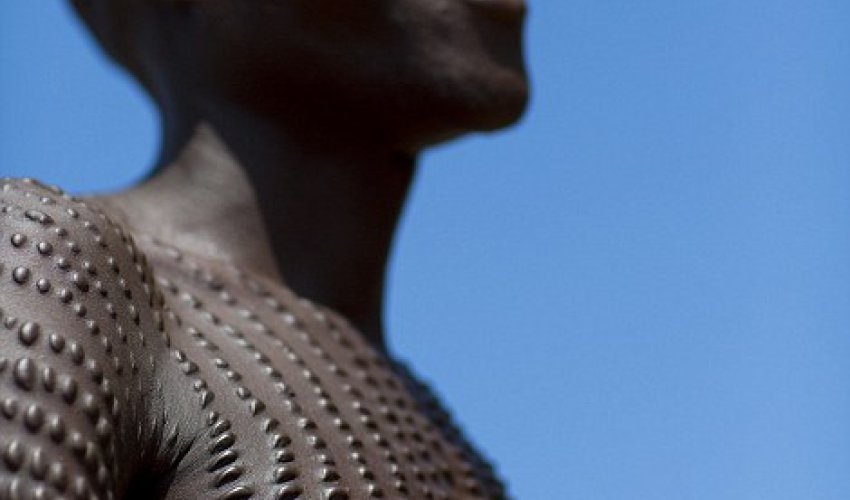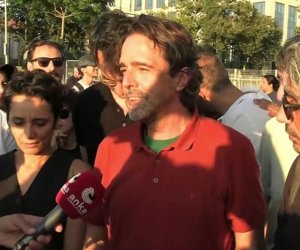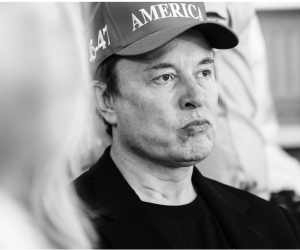Body modifications created with thorns and razor blades - PHOTO+VIDEO

For these aren't just any scars: They're an elaborate part of local culture and signify everything from beauty to adulthood or even, in some cases, are simply a mark of belonging. But Ethiopian tribes aren't the only ones to embrace scarification. In Uganda, the Karamojong are famous for their elaborate scar patterns, while across Ethiopia's border with Sudan, Nuer men bear scarred foreheads and consider getting them a key part of the transition from boy to man.Now the stunning scar markings of Ethiopia and Sudan are the subject of an incredible set of photographs by French snapper, Eric Lafforgue, who travelled through the country observing cutting ceremonies and meeting the locals.During a visit to the Surma tribe, who live in the country's remote Omo Valley, he witnessed a scarification ceremony, which involved creating the patterns using thorns and a razor.'The12-year-old girl who was being cut didn't say a word during the 10-minute ceremony and refused to show any pain,' he revealed. 'Her mother used a thorn to pull the skin out and a razor blade to cut the skin.'At the end, I asked her whether having her skin cut had been tough and she replied that she was close to collapse. It was incredible as she didn't show any sign of pain on her face during the ceremony as that would have been seen as shameful for the family.'What's more, he explained, despite the pain, the girl herself initiated the ceremony as Surma girls aren't obliged to take part. 'Scars are a sign of beauty within the tribe,' he added.'Children who go to school or convert to Christianity don't do it but the others see the ability to cope with pain as a sign that they will be able to cope with childbirth in future.'Other tribes who live in the Omo Valley, among them the Bodi, also embrace scarification and often use sap or ash to make the resulting wounds more prominent when they heal.But it seems that not everyone is impressed. 'People wearing scarifications are seen as "primitives" by many urban Ethiopians and suffer from this,' Lafforgue explains. 'Those who have had them but have been to school as well often try to hide them.'Others, such as the Mursi tribe, consider scars a sign of beauty and strength, although as Lafforgue relates, thanks to an influx of workers from other parts of Ethiopia, scarification is becoming an increasingly risky business.'Using shared blades is a huge problem in the south Omo region,' explains Lafforgue. 'Hepatitis is starting to become a problem as workers from other parts of Ethiopia arrive to work on the new giant [government-sponsored] plantations. AIDS is also becoming a threat.'Despite the risks, scarification continues to play a huge role in tribal life, not least across the border in South Sudan where scars are a distinctive feature of life for the Nuer people.South Sudan's second largest ethnic group after the Dinka, the majority of adult Nuer men have 'gaar' markings - six lines carved on either side of their foreheads - as a sign of maturity.Other Nuer, particularly the Bul Nuer of the Nile Valley, create a dotted version of gaar and women sometimes have them too. The neighbouring Toposa tribe, which lives in both Ethiopia and South Sudan has also embraced scarification but combine facial dot patterns with elaborate body etchings as well.Although the Toposa etchings remain popular with younger generations, the Nuer's gaar markings are becoming increasingly rare as conflict between them and other South Sudanese tribes becomes more frequent.'This tradition isn't done as much anymore,' explains Lafforgue. 'Partly, it's because of better education and the increasing number of people who have turned to Christianity but also because it is a too visible sign of tribal belonging in an area that has suffered many disputes.'(dailymail.co.uk)ANN.Az




































 Photo
Photo 



 Video
Video 

